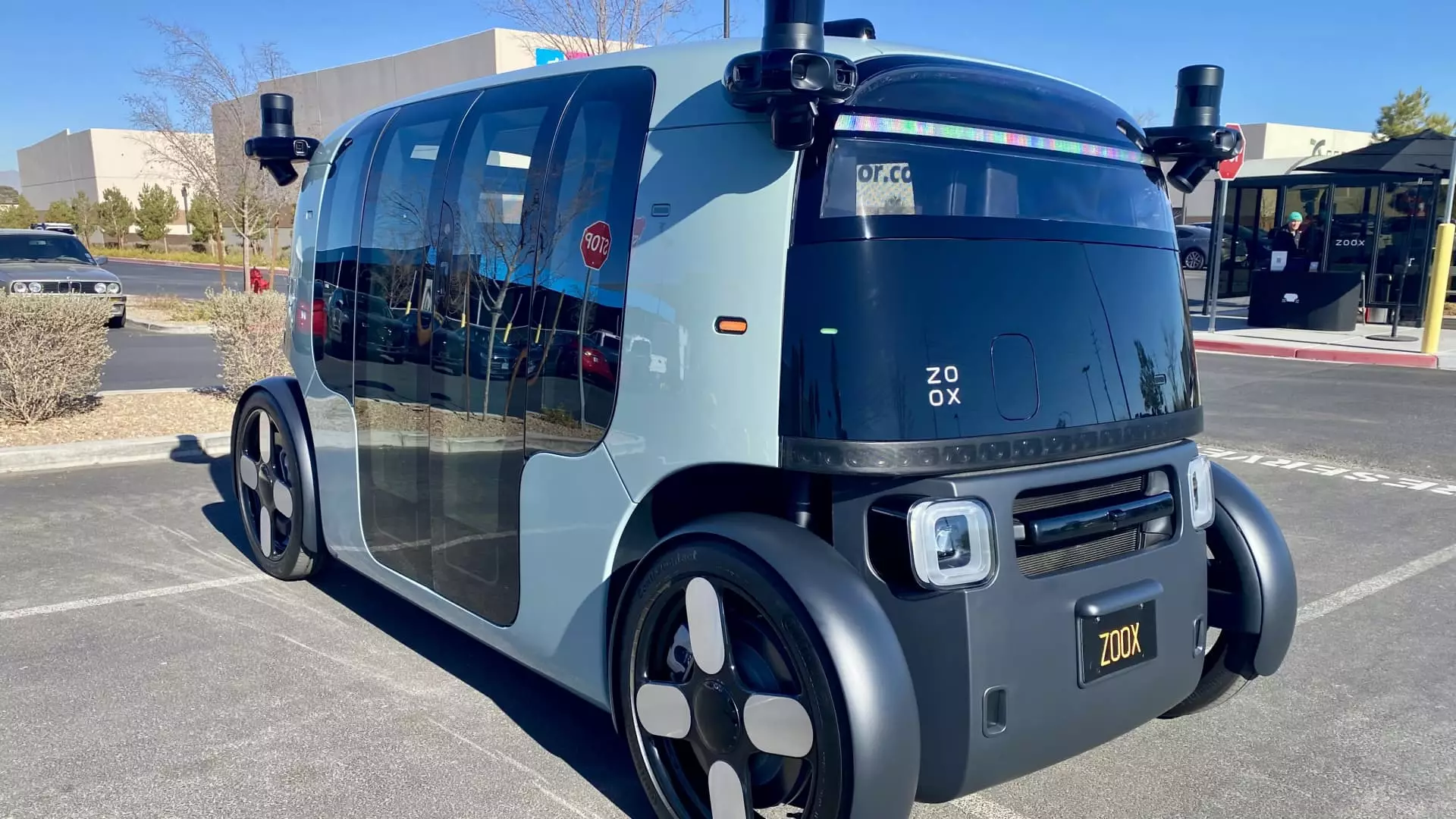In the rapidly evolving landscape of autonomous vehicles, few names resonate as prominently as Zoox, Amazon’s autonomous vehicle subsidiary, which is set to enter a transformative phase in its operational journey throughout this year. With ambitious plans to establish a commercial robotaxi service, Zoox is poised to redefine urban mobility. However, the company’s aspirations must contend with a backdrop of skepticism and challenges that have beleaguered the autonomous vehicle sector. While Zoox gears up for public rides, the realities of the industry underscore the complexities associated with automated transportation.
Founded in 2014 and acquired by Amazon in 2020 for a staggering $1.3 billion, Zoox has taken a distinct path in the race for autonomous mobility. Unlike competitors like Waymo, which retrofits conventional vehicles for self-driving capabilities, Zoox has engineered a bespoke robotaxi from the ground up, void of traditional driving controls. This strategy not only sets Zoox apart but also positions the company to redefine passenger experience in an autonomous context.
The robotaxis are designed with an unconventional layout, featuring two rows of seats facing each other and no steering wheel, creating a more communal environment for riders. Despite some critics likening the design to “boxes” or “toasters,” Zoox’s focus on optimized internal space reflects a broader vision of what autonomous transport could and should be. This departure from standard vehicle design aligns with modern trends that prioritize user experience over traditional automotive aesthetics.
As Zoox prepares for its public service rollout in Las Vegas, it faces a challenging landscape marked by disillusionment among investors and legacy automakers retreating from their own autonomous ambitions. Industry giants such as General Motors and Ford have shuttered their autonomous units following costly setbacks and regulatory headaches. These developments raise critical questions regarding Zoox’s eventual market entry and whether it can truly carve out a sustainable niche in the competitive robotaxi sector.
The company’s testing initiatives are currently confined to select urban environments: Las Vegas, San Francisco, and Foster City, where it is piloting its driverless robotaxis. Jesse Levinson, co-founder and chief technology officer of Zoox, acknowledges the demanding nature of expanding operational territories and scaling up its fleet. However, Zoox’s approach appears cautious, striving for safety and reliability, a fundamental requirement in an industry that has witnessed significant scrutiny following incidents involving driverless technology.
Levinson’s upbeat assertions regarding the readiness of Zoox to expand beyond its initial footprint—eyeing cities like Miami and Austin—signal a forward-thinking strategy. While Zoox anticipates launching its “Early Rider Program” in Las Vegas and later in San Francisco, the intricacies of establishing a functional business model remain a paramount concern. The juxtaposition between technological capability and market viability encapsulates the broader struggle faced by many autonomous vehicle enterprises.
The experiences of industry frontrunners like Waymo offer valuable lessons in navigating these waters. Having embarked on offering rides to the public since 2017, Waymo has successfully scaled its service, conducting over 150,000 paid rides weekly in multiple markets. The trajectory of Waymo’s advancements underscores the arduous path to establishing public trust and operational scale, emphasizing that technology alone does not guarantee commercial success.
While the prospects for Zoox’s innovative fleet are promising, critical observers remain wary. Autonomous vehicle expert Sam Abuelsamid posits that the technology is indeed progressing, but the question surrounding the operational model stands at the forefront. Achieving scalability and profitability in this domain is fraught with unknowns, particularly when considering the astronomical costs associated with developing and deploying autonomous systems.
In addition, recent incidents, including the grounding of GM’s Cruise autonomous unit following regulatory scrutiny and accidents, highlight the dire consequences of oversight and malfeasance in this high-stakes industry. As Zoox seeks to differentiate itself, it must navigate a landscape that is not only technologically intricate but also fraught with regulatory hurdles and public mistrust.
As Zoox gears up for market entry, it stands at the intersection of innovation and pragmatism in the autonomous vehicle marketplace. The company has laid an ambitious foundation, poised to launch a fleet that promises to enrich urban mobility. However, overcoming the significant hurdles of public acceptance, regulatory alignment, and financial viability will dictate the success of Zoox’s endeavor. The evolution of autonomous vehicles is well underway, with Zoox at the forefront of a journey replete with both potential triumphs and pitfalls that could define the future of urban transportation. As the world watches, it remains to be seen whether Zoox can truly emerge as a leader in a space marked by such intense competition and scrutiny.

